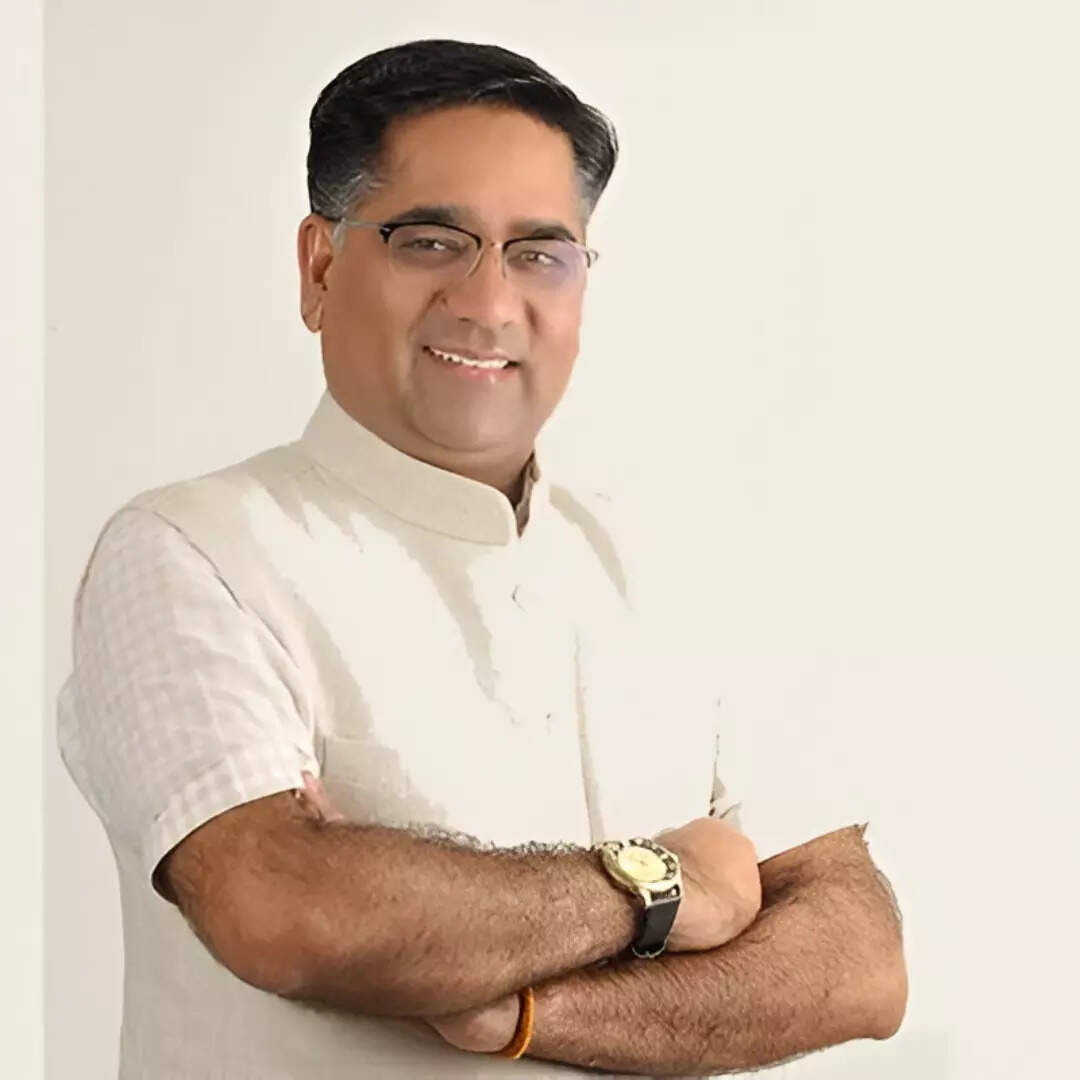
“Every drop of water we save today is an investment in a greener, prosperous Rajasthan tomorrow”. Suresh Singh Rawat, Cabinet Minister for the Water Resources and Planning Department, embodies this vision. Tasked with transforming Rajasthan—a state known for its arid landscape and water scarcity—into a water-secure region, he is driving ambitious initiatives ranging from river-linking projects to modern micro-irrigation systems, and from traditional waterbody rejuvenation to technology-driven monitoring solutions.
In an exclusive conversation with ETGovernment, he discusses the government’s long-term water security vision, strategies to balance urban and agricultural water demands, adoption of drip and sprinkler irrigation, and the role of cutting-edge technologies in ensuring efficient water management. This interview offers an in-depth look at how Rajasthan is navigating its water challenges while planning for a sustainable future.
Rajasthan is India’s driest state. What is your long-term vision for ensuring water security in the coming years?
Rajasthan has a unique geography. Nearly two-thirds of the state, lying west of the Aravalli range, is desert. While the state accounts for 10.4 per cent of India’s geographical area, 5.67 per cent of its population, 19 per cent of livestock, and 14 per cent of agricultural land, it has access to only 1.16 per cent of the nation’s surface water and 1.72% of groundwater resources.
The challenges are compounded by erratic and uneven rainfall and regional disparities in river and water source distribution, often resulting in floods or droughts. Rajasthan receives an average monsoon rainfall of 425 mm; in 2024, it received 665.74 mm, and in 2025, 679.06 mm. The total reservoir capacity of the state is 11,795 MCM, of which 86.30 per cent was filled last year and 90.53 per cent this year — indicating good monsoon performance for two consecutive years.
The government’s goal is to transform Rajasthan from a dry state to a green state. A “Runoff Water Grid” with an investment of ₹30,000 crore (announced in the 2024–25 budget) is being established to divert surplus water from the Chambal and Mahi basins to deficit areas. The aim is to optimally utilize rainwater that otherwise flows into the sea.
We are reviving old water structures, rejuvenating rivers like Bhadrawati (Karauli), Sabi, Ruparail (Alwar), and Jojari (Jodhpur), and promoting local water harvesting through anicuts and ponds. Alongside, we are modernizing irrigation systems to reduce losses and improve efficiency.
Over 50 per cent of the state’s water supply depends on inter-state rivers like Narmada, Ravi-Beas-Sutlej, Mahi, Chambal, and Yamuna. Works are already underway to strengthen transport systems for allocated Yamuna waters and restore canals of the Ravi-Beas-Sutlej system.The Union government’s decision under Prime Minister Narendra Modi to suspend the 1960 Indus Water Treaty — which allocated 80 per cent of river water to Pakistan — has also created a positive outlook for water availability.
In essence, Rajasthan is determined to overcome its geographical challenges and achieve water security through conservation, efficient management, and timely completion of irrigation projects. A Chief Minister’s Irrigation Task Force has been established for this purpose.
With rising water demand in agriculture and urban areas, what strategy ensures balanced allocation?
Under the State Water Policy 2010, clear priorities have been defined — with drinking water given top priority. The Water Resources Department allocates water based on the demand from the Public Health Engineering Department (PHED).
For instance, drinking water is supplied to Jaipur, Ajmer, and Tonk from Bisalpur Dam; to Kota, Bundi, and Bhilwara from the Chambal River; and to nearly the entire western Rajasthan through the Indira Gandhi Canal Project (IGNP).
Several new projects — such as Isarda Dam, Parvan Dam, Navnera Barrage, Dewas III & IV, Peepalkhunt High-Level Canal, Kaliteer, and IGNP Escape Reservoirs — have been prioritized to meet PHED’s requirements.The Ram Jal Setu Project also aims to ensure water security for irrigation and drinking needs in 17 districts, covering nearly 40 per cent of the state’s population.
For agriculture, projects like Parvan, Andheri, Hathiyadeh, Upper High-Level Canal (Banswara), and Dholpur Lift are creating irrigation potential across 3.25 lakh hectares. Within the Ram Jal Setu area alone, over 1.5 lakh hectares of irrigation are being restored and 2.5 lakh hectares newly developed.
Existing irrigation projects are being gradually converted to micro-irrigation methods for higher efficiency, while major canal systems — IGNP, Gang Canal, Bhakra Canal, Mahi, and Chambal — are undergoing large-scale modernization.In addition, small irrigation projects and renovation of ponds are being carried out at the local level.
What measures are being taken to promote drip and sprinkler irrigation in agriculture?
Rajasthan has made micro-irrigation central to its water management strategy. Since 2016, all new irrigation projects are being developed entirely on drip and sprinkler systems, while existing ones are being progressively converted. So far, about 4 lakh hectares of new command areas have been brought under micro-irrigation, and 2.5 lakh hectares in the IGNP command area are being upgraded.
Under the Ram Jal Setu Project, micro-irrigation will cover 2.51 lakh hectares. To lower energy costs, 100 MW of solar power plants are being set up in Baran, Jhalawar, Dholpur, Banswara, and Udaipur to support these systems. Alongside, continuous farmer training and field demonstrations are being organized to ensure efficient adoption and maintenance.
These initiatives promote water conservation, reduce power costs, and increase crop productivity, reinforcing Rajasthan’s commitment to sustainable and climate-resilient agriculture.
How are traditional water systems like stepwells, ponds, and johads being integrated with modern management and budgetary support?
Water harvesting and preservation are part of Rajasthan’s cultural heritage. The previous government’s Mukhyamantri Jal Swavalamban Abhiyan and the current Vande Ganga–Jal Sanrakshan Jan Abhiyan have successfully raised awareness and public participation.
Under the Vande Ganga campaign, 6,534 programmes were organised, 3,080 water bodies cleaned, and nearly 4 lakh people participated. Other campaigns like Catch the Rain, Jal Sanchay–Jan Bhagidari, Karmbhoomi se Matribhumi, and Hariyalo Rajasthan are continuously promoting conservation.
Traditional water bodies such as wells, stepwells, and ponds are being cleaned and restored to capture rainwater. Efforts are also being made to develop local lakes and riverfronts as eco-tourism sites.To rejuvenate silted traditional water sources, a budget provision of ₹500 crore was made in 2024–25. Desilting work has already started in Bhilwara, Ajmer, and Jhalawar districts.
How are technologies like GIS mapping, smart monitoring, and AI improving planning and transparency?
All new irrigation project DPRs are being prepared using GIS technology, which helps identify the most techno-economically viable options. Under the National Hydrology Project, SCADA systems have been installed at nine major dams — including Bisalpur, Mahi, Jawai, and Rana Pratap Sagar — and two canals, enabling remote operation and real-time monitoring from control rooms.
For transparent and data-driven decision-making, 154 automatic rain gauges, 143 water level recorders, and 25 weather stations have been installed across the state. Hourly data from these systems is made publicly available through the Water Resources Information System (WRIS) dashboard.
To ensure timely and effective implementation of major projects like the Eastern Rajasthan Canal Project (ERCP) and the Vande Ganga Abhiyan, a dedicated corporation and specialized staff have been set up. Multiple project components are being executed simultaneously, with proactive efforts for land acquisition and statutory clearances. A Chief Minister’s Irrigation Task Force has also been constituted to ensure high-level monitoring, coordination, and speedy execution of these transformative initiatives.
What are the top three water resource priorities for Rajasthan by 2030 to achieve lasting water security?
1. Ram Jal Setu Link Project: Under the national river-linking programme, the Ram Jal Setu Link Project (revised Parvati–Kalisindh–Chambal) was prioritised, with MoU signed with the Government of India and Madhya Pradesh in January 2024 and MoA in December 2024. It will irrigate over 4.74 lakh hectares across 17 eastern districts and meet drinking water needs of nearly 3 crore people.
Construction work on key components — Ramgarh, Mahalpur, and Navnera Barrages, pumping stations, aqueducts, and feeders to Mej, Galwa, Isarda, and Bisalpur — worth ₹9,416.70 crore has begun, targeted for completion by June 2028.
The second phase, worth ₹13,895.50 crore, includes the construction of the Mor Sagar Reservoir and feeders linking Isarda, Bisalpur, and Bharatpur. Additionally, LoA worth ₹780.64 crore for Brahmani Barrage was issued in September 2025.
2. Yamuna water project: To utilise Rajasthan’s allocated Yamuna water for Churu, Jhunjhunu, and Sikar districts, a tripartite MoU was signed in February 2025 between Rajasthan, Haryana, and the Government of India. DPR preparation has been assigned to NABCONS, and alignment surveys are underway.
3. Diversion of surplus water from Mahi Basin: In the 2024–25 budget, plans were announced to divert surplus water from Mahi, Som, and Kamla Amba rivers to fill reservoirs such as Jaisamand and Jawai and to benefit Bhilwara and Chittorgarh. DPR preparation is being undertaken by NABCONS and WAPCOS.
Additionally, restoration of the IGNP Main Canal’s original capacity of 18,000 cusecs is in progress.
Under the Pradhan Mantri Krishi Sinchai Yojana, several initiatives — such as micro-irrigation, pond rejuvenation, and canal modernisation — are ensuring efficient water use and increased irrigation coverage across Rajasthan.

